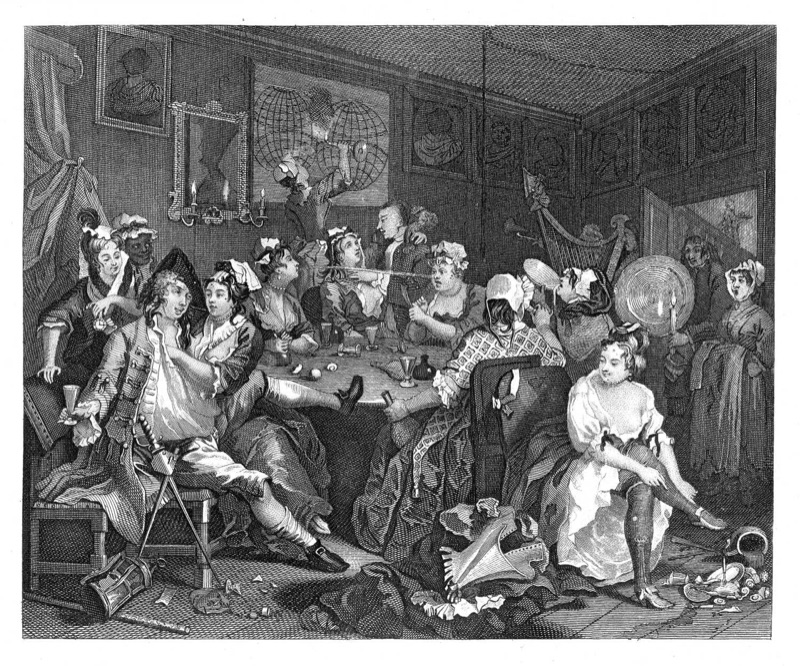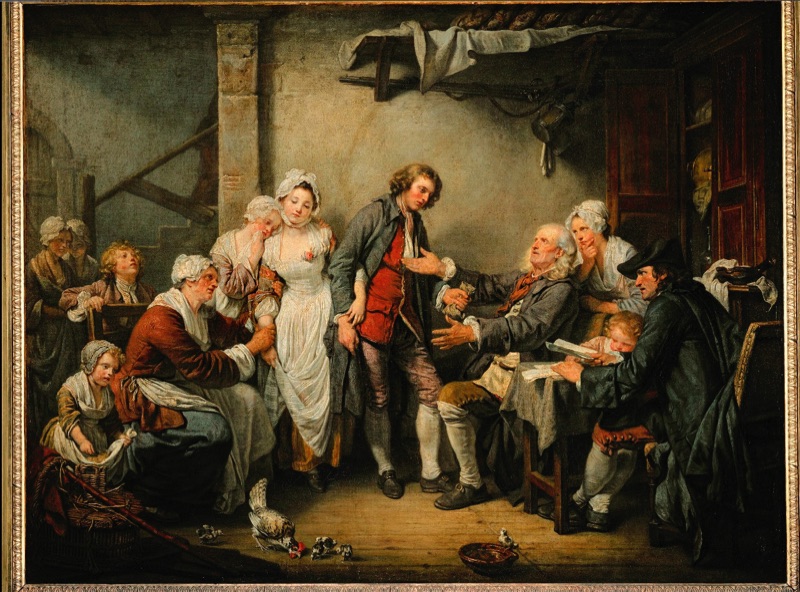Modern moral subjects
pre-class prep: read Chu pp. 34-41 (PDF); review pp. 31-33 from the Rococo readings
read Denis Diderot, "Salon of 1763" (PDF)
watch YouTube video A Rake's Progress by William Hogarth
discussion questions: Those named for the questions below should come prepared to present a short (3-5 minute) response to that question.
1. (Tara M.) Summarize Diderot's analysis of Greuze's Filial Piety. What does Diderot see as the role of art in society? Why does he consider Greuze to be the savior of French art and moral values in contrast to Boucher and the Rococo?
2. (Tyson G.) Briefly recount the story of William Hogarth's multi-painting/print series Marriage-a-la-mode (one frame of which is in the readings for the Rococo topic; you'll need to look the rest of the series up online). What moral values does it promote? How does it reject the values of the aristocracy as revealed in Rococo art such as Fragonard's The Swing? Think specifically about attitudes toward (a) wealth, (b) love, and (c) work.
people, terms, and concepts: aristocracy, bourgeoisie, patron, ‘modern moral painting,' Denis Diderot
key points:
• What are the characteristics of the 'modern moral subjects' called for by Hogarth and Diderot, among others in the eighteenth century? How are they explicitly opposed to the Rococo in terms of subject-matter, style, and overall intent?
• How do these modern moral subjects reflect the values of the bourgeoisie and the Enlightenment, and reject the values of the aristocracy and the Ancien Régime? For example, how are the financial and sexual values that cause Tom Rakewell's downfall typical of those of the aristocracy and opposed to the bourgeois 'work ethic' and 'family values' demonstrated in Greuze's Village Betrothal?
• How do artists such as Hogarth and Greuze tell stories and reveal the values and emotions of their characters through action, gesture, expression, settings, and symbolic objects?
• It would be a really interesting essay question for the exam to contrast Boucher’s Shepherd’s Presents (on the prior page) to Greuze’s Village Betrothal. In addition to the obvious things like what story or anecdote is being told, think about how the form or style of each reinforces their respective messages; and about how each uses the little baby chicks allegorically ...
William Hogarth, The Rake's Progress, scene 3 (At Rose Tavern), engraving, 1735
Greuze, The Village Betrothal, 1761


